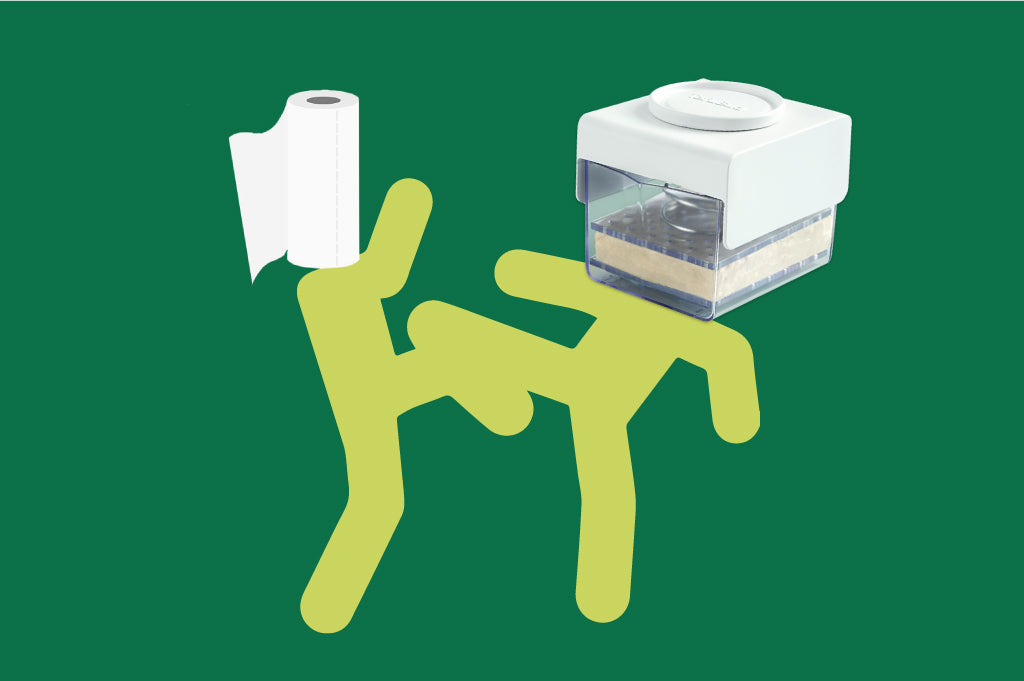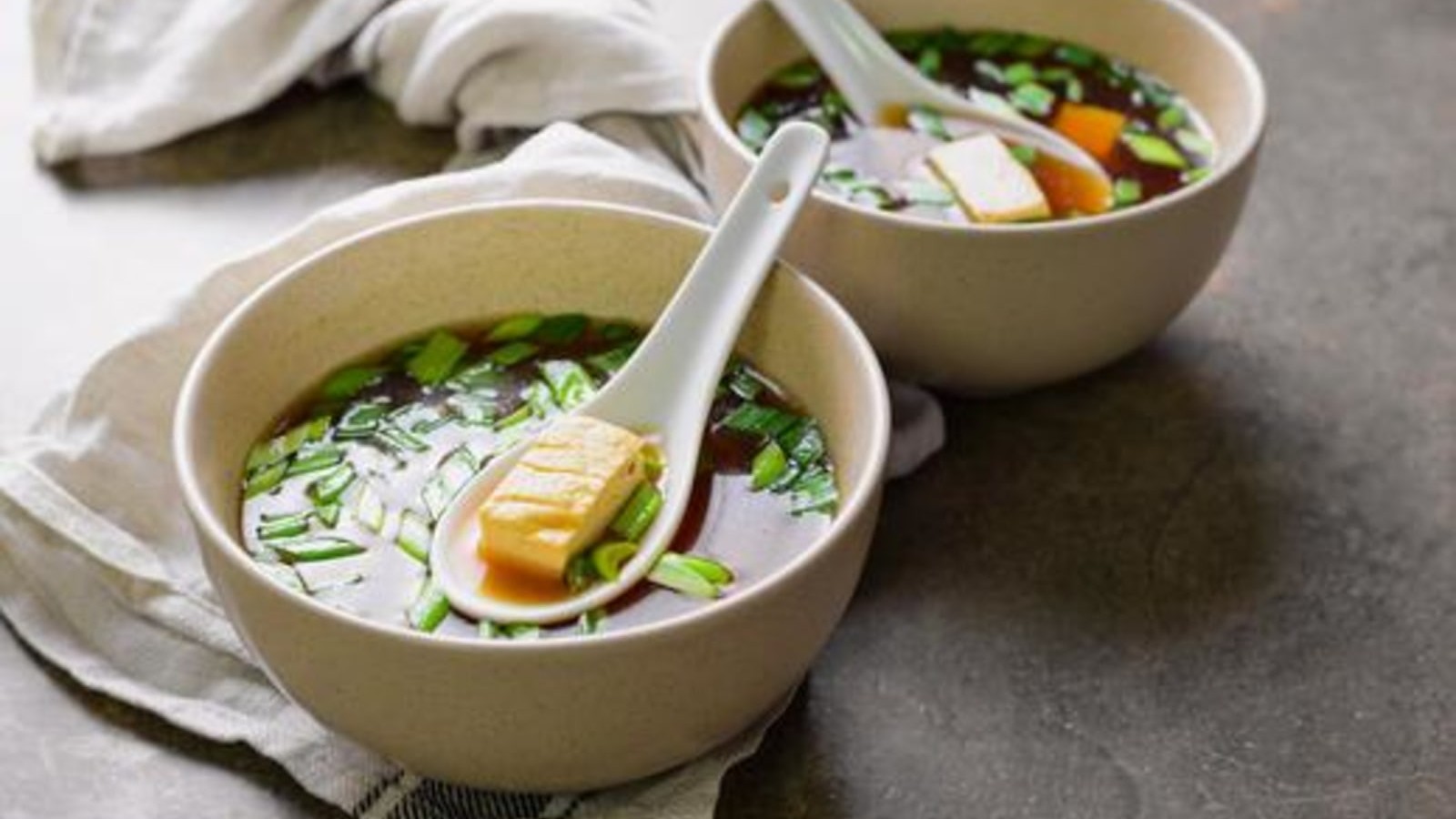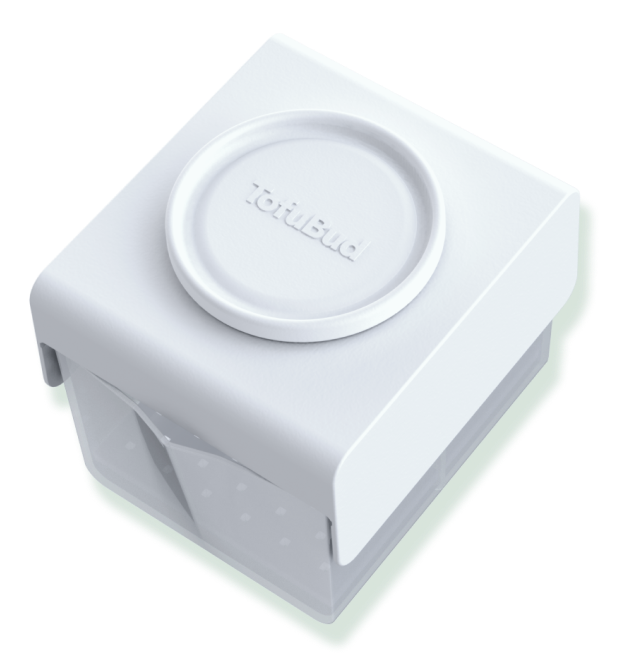Do you want to lose a few pounds, or just make some healthier lifestyle choices, but don't want to stop eating flavourful food? Vegan miso soup could be an excellent option for you! This easy vegan miso soup recipe is high in nutrients but low in fat and calories – and more importantly, it's delicious. Dieting doesn't have to be difficult with dishes like these!
Vegan miso soup is one of those simple recipes that take no time to make and is an easy nutrient and vitamin boost. This hearty soup is perfect for when you're feeling a bit under the weather: the broth will warm you up, and it's got just the ingredients that you need to get you bounce right back!
Vegan miso soup recipes have the added benefit of being much healthier than their fishy counterparts. So, what are you waiting for? Let's learn how to make vegan miso soup!
What is Miso Soup?
Miso soup is a Japanese dish that is generally served alongside other meal components, or as a snack in between meals. However, you can make a larger portion of homemade miso soup and eat it as a meal, especially if you add plenty of other ingredients, such as vegetables and tofu.
Miso soup is traditionally made using fish stock. However, it's easy to swap fish stock for seaweed to give it a fishy flavor, while keeping it entirely vegan.
Vegan Miso Soup Tips and FAQ
As this miso soup uses a few ingredients that you might not be familiar with, here are some top tips that we have to make the most of your bowl.
What is miso?
Miso is a paste that is a staple in Japanese cooking. It's fermented and has a salty taste. There are a few different types of miso, and the miso you should use varies depending on the recipe.
In this recipe, we use white shiro miso paste. This is a cooking paste that can be purchased from Japanese stores, and has an umami-like flavor. It is fermented and is excellent for probiotics, helping make this one of the healthiest vegan soup recipes!
Miso is made from rice and soybeans. If you have a soy sensitivity or allergy, you can substitute your white shiro miso for brown rice miso or chickpea miso.
Miso can be used in this recipe and a plethora of other vegan dishes. It's delicious in food like cheese sauces, gravies, soup, and pesto. Think of it as a thickener that also adds salt and plenty of flavor – it's an excellent replacement for dairy in vegan cooking.
White shiro miso keeps for ages in the fridge. You can purchase some the next time you are at a Japanese store and keep it for whenever you need!
What is silken tofu?
Silken tofu is typically a little softer and smoother than other types of tofu. The smooth texture works well with this dish.
You can also use traditional, soft, or medium silken tofu.
What is wakame?
Wakame is a particular type of seaweed that we recommend using in this miso soup vegan recipe. It's a source of omega-3, which can be difficult to find in plant-based foods.
What's more, wakame is packed with vitamins and minerals, so this miso soup incredibly healthy to eat! Remember to rehydrate your dried wakame before cooking.
What is kombu?
Kombu is a type of dried thick seaweed that gives the flavor to this dish. Indeed, kombu makes this miso soup vegan.
It means that you can sacrifice the fish stock yet still have a seafood-like flavor! However, it's not just used for flavoring – kombu and wakame are both edible, so you can leave both seaweeds in the soup and eat them. They also have amazing health benefits!
Is miso soup vegetarian?
Is miso soup vegan? Or is it suitable for vegetarians or pescetarians?
Miso soup is traditionally made with fish sauce. However, the seaweed that we use makes this miso soup recipe vegan. It will still taste like authentic miso soup, but it is completely plant-based!
However, if you are eating at a Japanese restaurant, your miso soup may be made from fish stock – it's always best to check.
Can I use nori in my vegan miso soup?
If you cannot find any wakame or kombu, you could use nori sheets in a pinch. These will give your soup the fishy flavor that we are looking for, but they aren't as strong as kombu and wakame.
If you can only find nori, we recommend also using soy sauce in your broth to make it just a little bit more flavorful. Of course, if you want to add nori as well as wakame and kombu for a super seaweedy broth, go for it!
Can I keep my miso soup in the fridge?
Yes, you can keep your soup in the refrigerator for up to four days before it starts to go bad. When you reheat your miso soup, it's best to take it off the heat before it starts to boil, as any boiling will cause the fermented miso to lose some of its flavor and nutritional value. And this soup is so delicious that you'll certainly want to keep as much flavor packed in as possible!
While the soup won't change much in the fridge, it doesn't store quite as well in the freezer. The tofu will go mushy and the soup will likely lose some of its flavors. It's best to either eat it all fresh or the next day.
Don't worry, though - it's so tasty that we're sure you won't have too many leftovers!
Does tofu in soups work?
Tofu in soup sounds like a bit of a strange concept, but trust us: in Japanese cuisine, it's ubiquitous, and it works really well!
For this recipe, you'll need to use silken tofu, which can be pressed with your tofu press, and then cubed. Tofu adds some substance to your broth, making this a more filling meal than if it were broth alone.
Can I add other vegetables to my vegan miso soup?
Absolutely! If you want to make this a more filling and hearty meal, feel free to add any other kind of vegetables. Miso soup with vegetables is an incredibly healthy meal, packed with vitamins and minerals, yet extraordinarily low in calories.
You can let your creativity run wild, but personally, we love including eggplant, broccoli, green beans, and beansprouts. This miso soup is an ideal recipe to use up any vegetables in the fridge, but any vegetable can work with this miso soup!
You could also add noodles to make it a more filling dish. If you purchase noodles, double-check that they are egg-free to ensure that this miso soup stays vegan! If you want to keep your miso soup low-carb, you could use a spiralizer to make zucchini or carrot noodles.
What can I eat with my miso soup?
While we recommend making this miso soup into a meal, there are plenty of recipes with miso soup that you can make. Try having your miso soup alongside other traditional Japanese foods like sushi, tempura, or gyoza, or have it as a starter with pretty much any food!
Conclusion
This easy vegan miso soup recipe is undoubtedly one to add to your bank of simple vegan meal ideas. Whip it up for lunch, make a heartier dish with vegetables and noodles for dinner, or have it as a starter for any meal.
It's so effortless to make, but we guarantee that anyone who you serve this soup will be asking for the recipe!









Leave a comment (all fields required)